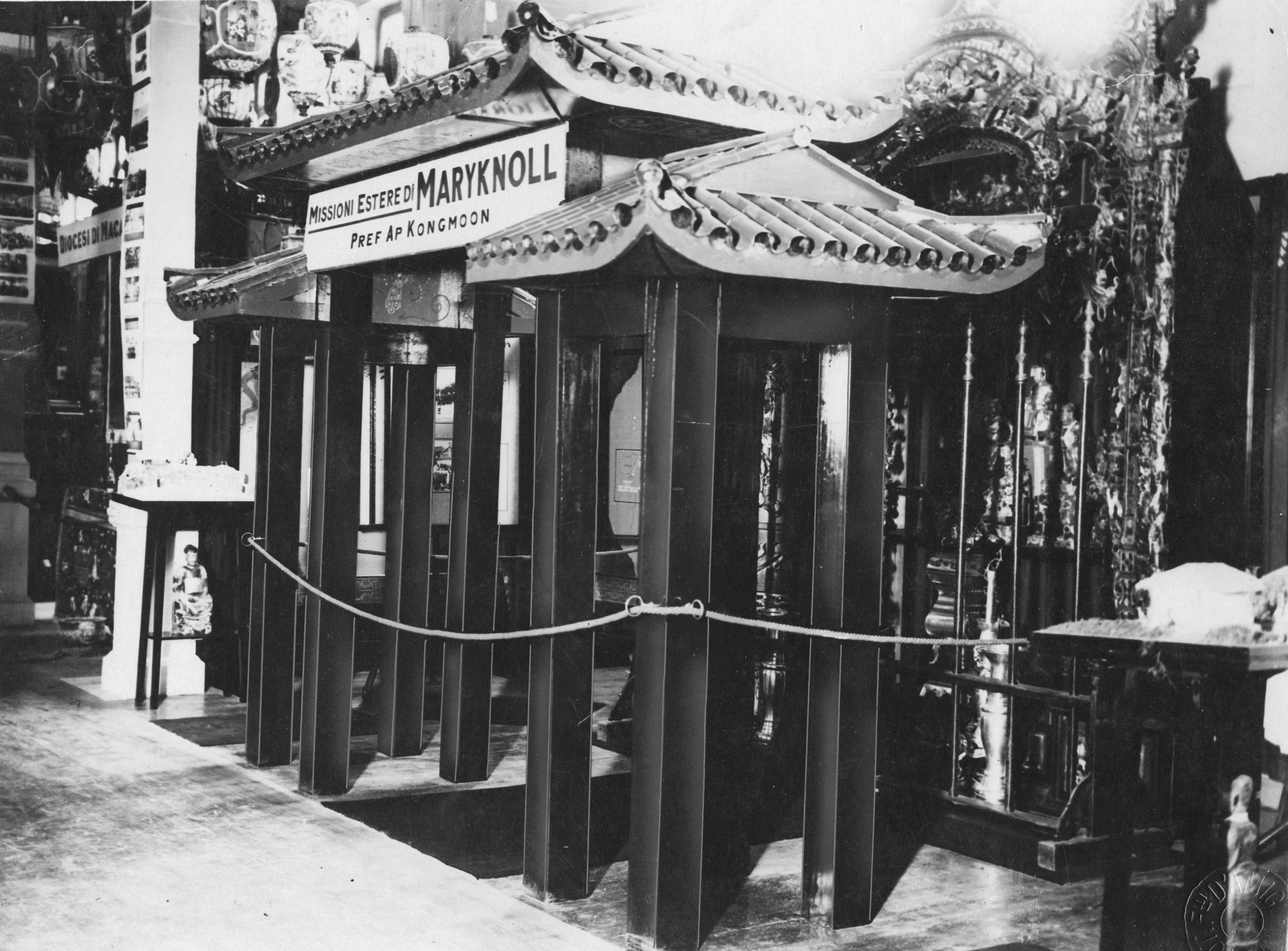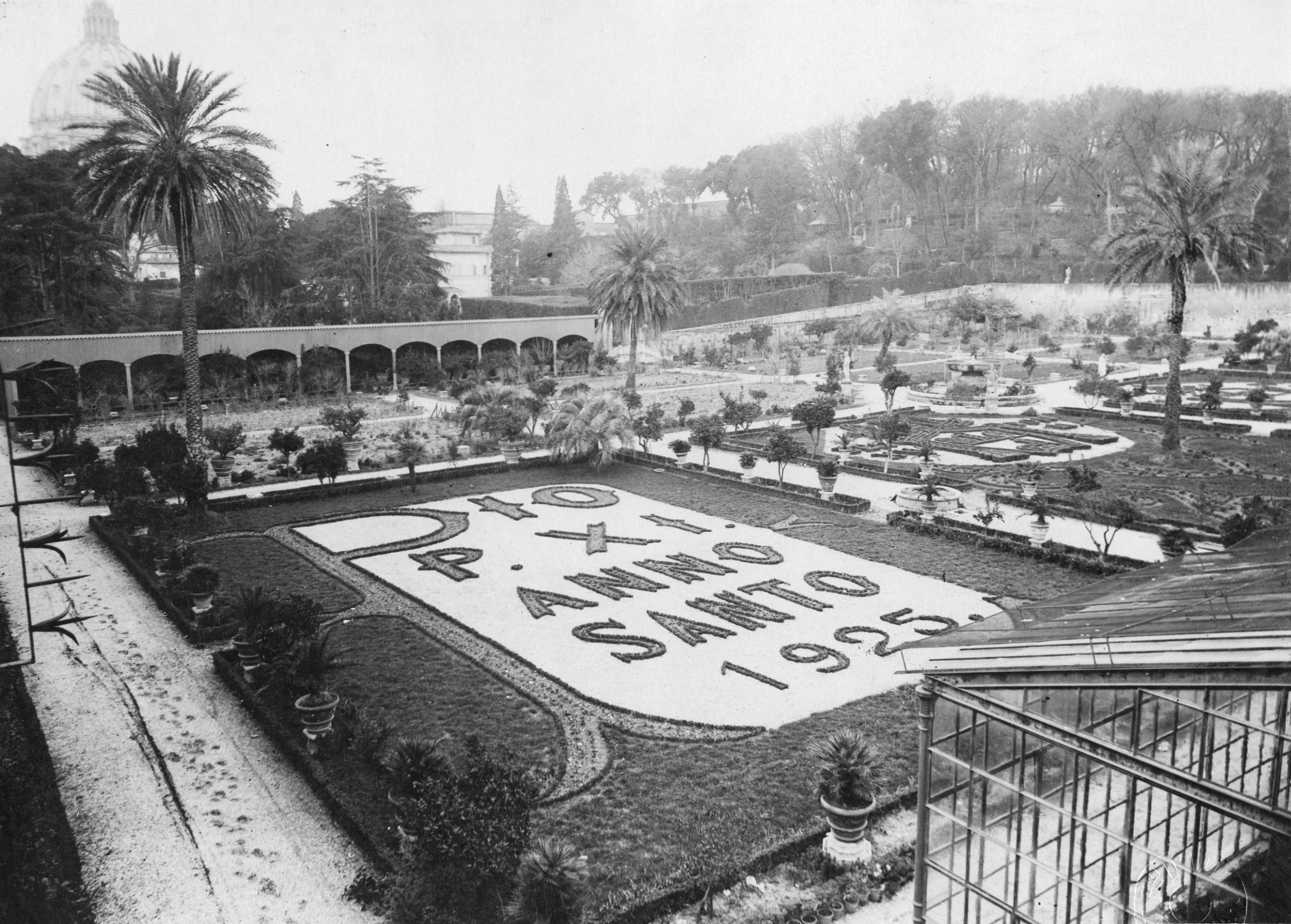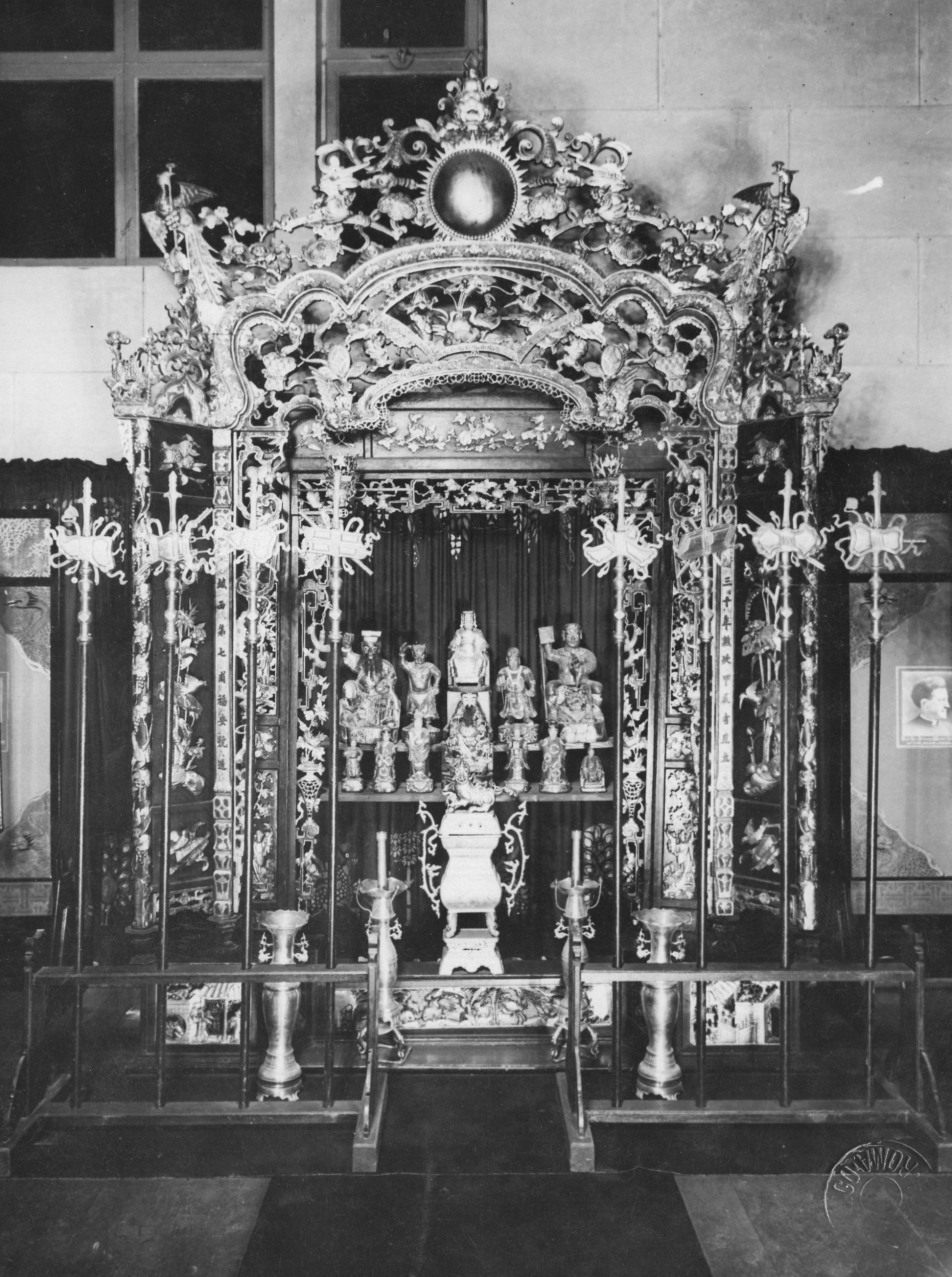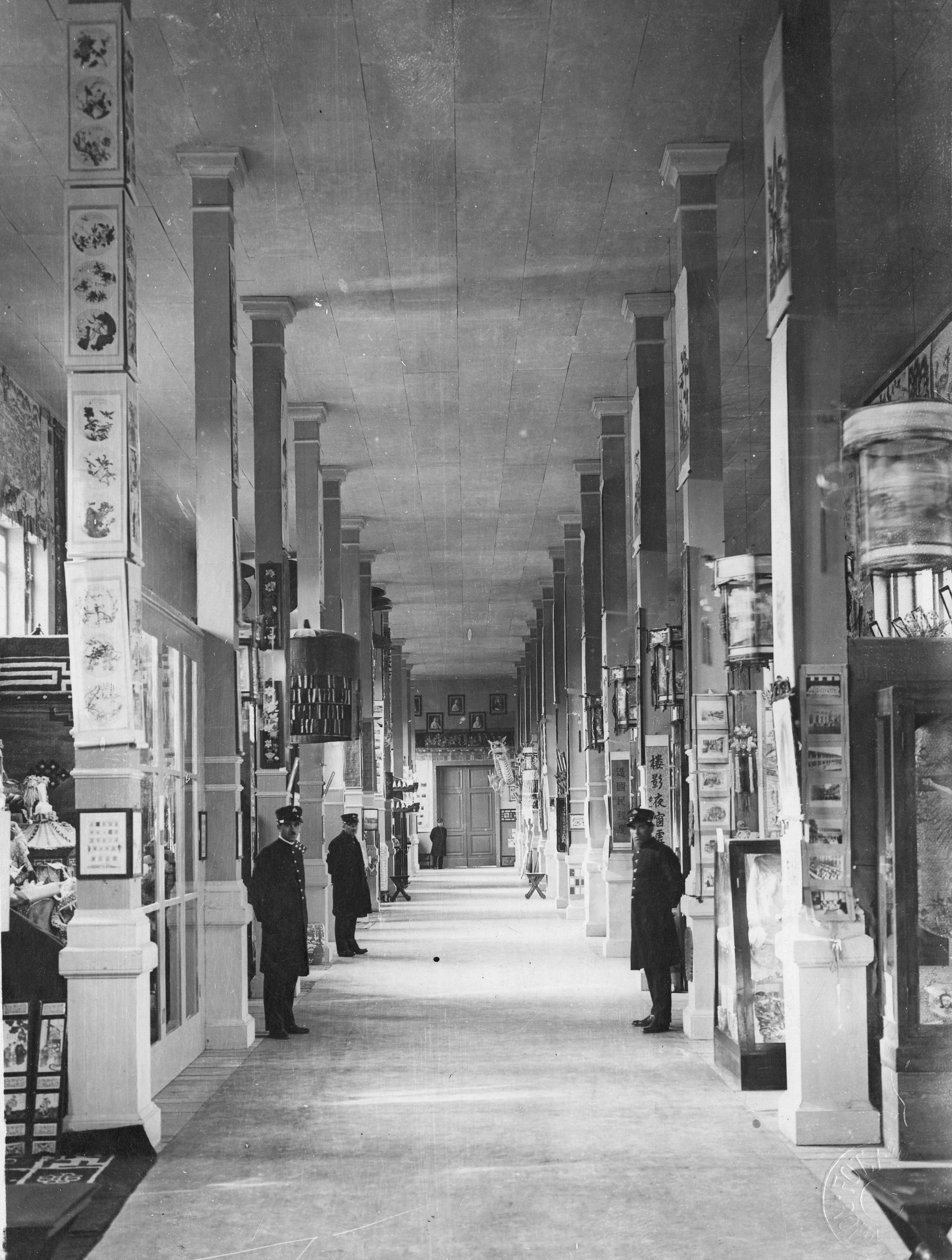Holy Year Exhibition in Rome, 1925
As we continue to celebrate the Holy Year 2025, the Maryknoll Mission Archives is reminiscing about the Holy Year celebrations from 100 years ago. In 1925, Maryknoll Fathers and Brothers participated for the first time in the Holy Year Exhibition hosted by the Vatican. This year was particularly special, as the selected theme highlighted international missions and the missionaries who served them.
The Pontifical Missionary Exposition of 1925
In 1924, Pope Pius XI declared a Holy Year for 1925. The celebrations would include the Pontifical Missionary Exposition, a year-long exhibit featuring the Church’s missions from around the world. Catholic missionary societies were invited to build booths at the Exposition and showcase their work for the many pilgrims and tourists expected to visit Rome. The Maryknoll Fathers and Brothers were ecstatic to receive their invitation.
Fr. James A. Walsh, co-founder and Superior General of Maryknoll Fathers & Brothers, chose Fr. John J. Considine as the Society’s representative. Fr. Considine was given responsibility for planning Maryknoll’s exhibit, shipping its parts to Rome, and reconstructing it onsite. During his time in Rome, he would also be expected to network with local and visiting hierarchy, educate religious and pilgrims on Maryknoll’s mission work, and stand as a shining example of the Maryknoll Fathers and Brothers.
It’s important to recall that in 1924, the Society was still very young. Most people had not met a Maryknoll Father or Brother in person, with the exception of American Catholics and people living in southern China. Maryknollers had established themselves as missionaries in China in 1918, and they had recently received permission to serve in Korea. Fr. Considine had an important task placed on his shoulders, but he was up to the challenge of advocating for Maryknoll.
The Topic at Hand
Deciding on a topic for Maryknoll’s display was relatively easy. Maryknoll missioners were currently serving only in southern China, so the exhibit would honor Chinese culture. Coordinating its final design took significantly more effort. It’s noted in The Field Afar magazine that there were “months of painstaking effort by Maryknoll Sisters and Brothers at home” and “cooperation by the Maryknoll Hongkong Procure” to create the final exhibit (April 1925). Fr. Considine coordinated and oversaw the joint efforts of Maryknollers in both countries.
Each party contributed to the exhibit’s success. In Maryknoll, New York, Sisters and Brothers worked for months to construct an archway inspired by Song dynasty architecture. The main archway was flanked on either side by shorter, smaller wooden arches. The faux roofing covering the arches resembled the glazed tubular tiles popularized in Chinese architecture between 960 and 1279 AD. Described as “modest” and “largely homemade”, the final product stood as an entrance to the exhibit’s central piece, a Buddhist altar. The Buddhist alter was provided by the Maryknoll Hongkong Procure, and was shipped directly to Rome from Hong Kong to ensure its timely arrival.
View of the Papal Gardens during the Pontifical Missionary Exposition in 1925.
Photo credited to F.lli D’Amico.
Construction Zone
Fr. Considine arrived in Rome on November 26, 1924, ready to supervise construction of the Society’s exhibit within the Vatican’s Gardens. He had less than a month to complete the work. This is, of course, when the troubles started. Some of the difficulties he encountered prior to the exhibition are documented in Fr. Considine’s letters home to Bp. James A. Walsh.
We had been cut to three metres [meters] of space… Exposition space fluctuates like the stock market these days.
Our space at the Exhibition is safely determined, though it was changed twice since my arrival. We have erected the Chinese altar, but the other cases have not arrived. From Naples to Rome takes five hours – yet the opinion here is that it takes longer from Naples to Rome than from Hongkong to Naples. Our cases arrived at Naples early in November.
“…when the Exposition opens there will be need of a small leaflet to give to inquirers. Since we should not prepare a special one, will you consider the advisability of mailing me a few thousand of “Do you know the story of Maryknoll?”
The exhibit material arrived last Monday. By Tuesday evening it was unpacked and partially erected. All but a few problems are solved now and I am beginning to feel that we may be satisfied with our sections. Let me say, however, that it is sheer good fortune…which is bringing us through.
Interior of China Hall #2 from the Pontifical Missionary Exposition. The arch from Maryknoll’s exhibit can be seen on the left side, further down the hall. Photo credited to F.lli D’Amico.
…I presented him with a sketch requesting the removal of a pillar which stood directly in the center of our space and destroyed possibility of our erecting our arch. “Impossible”, was his kind enough but very determined reply.
The arch…stands in the center as during assembly at Maryknoll, the altar behind it. The panels take the sides as at the Knoll, with one model at each end. (The other two models were destroyed in shipment due to a glue composition used which moulded.)
Despite the setbacks and numerous issues that arose, Fr. Considine was able to finish construction of the arch and complete the exhibit in time. The Exposition officially opened on December 21, 1924, following the Pope’s blessing and tour of the exhibit halls. Fr. Considine and the exhibit were personally blessed by the Pope as he visited each station. Father recalled in a letter to Fr. James A. Walsh that, while he did not receive special treatment, “it is very satisfying to me at least to feel that I got the same attention that the veterans of centuries in mission activity received. Maryknoll was not founded when most of the missioners present went to the field (Dec. 22, 1924).”
A Closer Look at the Exposition
Deeply inspired by the Exposition and his fellow missionaries, Fr. Considine published a book about his experiences in September 1925. If you’re interested in learning more about the exhibition in Father’s own words, The Vatican Mission Exposition: A Window to the World is available digitally through the Internet Archive. The book also contains select photographs from the numerous exhibit halls.
Interested in learning more about Maryknoll?
You can contact the Archives at:
Maryknoll Mission Archives
PO Box 305, Maryknoll, New York 10545
Phone: 914-941-7636
Office hours: 8:30 am-4:00 pm Monday-Friday
Email: archives@maryknoll.org
Website: www.maryknollmissionarchives.org
References:
Bishop James A. Walsh. Maryknoll Mission Archives. (2019, July 25). https://maryknollmissionarchives.org/bishop-james-a-walsh/
Cairns, M. (2024, October 23). Rome House – A brief history of maryknoll in Rome. Maryknoll Mission Archives. https://maryknollmissionarchives.org/rome-house-a-brief-history-of-maryknoll-in-rome/
Considine, J. J. (2020, February 12). The Vatican Mission Exposition : A window on the world. Internet Archive. https://archive.org/details/vaticanmissionex0000cons/mode/2up
Father John J. Considine, MM. Maryknoll Mission Archives. (2014, April 17). https://maryknollmissionarchives.org/deceased-fathers-bro/father-john-j-considine-mm/
Jubilee 2025 – Pilgrims of Hope. USCCB. (2025). https://www.usccb.org/jubilee2025
Maryknoll Fathers and Brothers. (1925, March 1). The field afar 1925-03: Vol 19 ISS 3. Internet Archive. https://archive.org/details/sim_maryknoll_1925-03_19_3/mode/2up?q=exhibit
Maryknoll Fathers and Brothers. (1925, April 1). The field afar 1925-04: Vol 19 ISS 4. Internet Archive. https://archive.org/details/sim_maryknoll_1925-04_19_4/mode/2up?q=pontifical%2Bexhibition
Wikimedia Foundation. (2024, September 25). Pope pius XI. Wikipedia. https://en.wikipedia.org/wiki/Pope_Pius_XI
Wikimedia Foundation. (2025, May 26). Chinese glazed roof tile. Wikipedia. https://en.wikipedia.org/wiki/Chinese_glazed_roof_tile
Wikimedia Foundation. (2025, June 16). Chinese architecture. Wikipedia. https://en.wikipedia.org/wiki/Chinese_architecture








